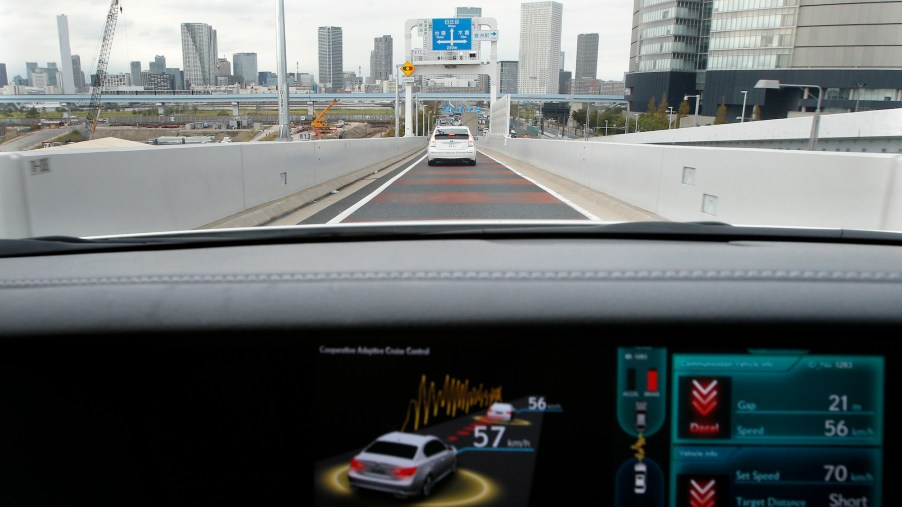
Does Cruise Control Waste More Gas?
Many car shoppers seek models with advanced driver assists. Features such as automatic emergency braking and lane-keeping assistance can safeguard occupants and keep the car’s resale value high. But there are tradeoffs with some advanced safety features. Some have a reputation for glitching; others are expensive to repair. And one notable feature — adaptive cruise control — might even negatively affect gas mileage and total ownership costs.
How does adaptive cruise control work?
A modern variation on the traditional cruise control system, adaptive cruise control includes different systems that automatically adjust a vehicle’s position relative to its road position. One system known as automatic braking uses sensors to detect vehicles ahead and slow to avoid rear-ending them. When there is no longer an obstacle in front, adaptive cruise control will resume its previous speed automatically.
Dynamic set speed types can slow a car or speed it up without manual intervention to match current speed limits. These systems use GPS to gauge a vehicle’s position relative to speed limit signs and help drivers avoid unintentionally speeding on a highway or expressway.
As car manufacturers have worked to develop autonomous vehicles in recent years, the industry has developed a classification convention that includes features that allow a vehicle’s computer systems to share vehicle control with the driver or else take control entirely. Vehicles with adaptive cruise control are considered Level 1 autonomous vehicles. Level 1 vehicles usually also have features like parking assistance, lane-keep assistance, and automatic braking.
Are there drawbacks to adaptive cruise control systems?
Adaptive cruise control doesn’t come standard on every vehicle. In fact, this system can be pricey depending upon the make and model. Though this feature can help mitigate accidents stemming from driver fatigue, it can also lull drivers into a false sense of security. A tired driver using adaptive cruise control might not resume control of the vehicle quickly enough in an accident or emergency.
According to a recent study cited by Kia, if a driver travels through hilly or mountainous terrain with many curves, adaptive cruise control systems might prove less fuel-efficient than presumed. The excessive increases and decreases in speed could cause vehicles to consume up to 20 percent more fuel than they might by using the gas and brake pedals.
However, in general, adaptive cruise control usually helps drivers conserve fuel, save money, and reduce total car ownership costs. Coupling this feature with driving in the right-hand lane and avoiding sudden acceleration and braking can result in serious fuel cost savings.
The origins of this car convenience feature
It’s helpful to understand what cruise control is and how it works. It’s a system that keeps a vehicle running at a constant speed the driver sets. Though it has precursors, the modern mechanism we know as cruise control was invented in 1948 and patented in 1950 by inventor Ralph Teeter. The device saw its first commercial use when installed on the 1958 Chrysler Imperial. Soon, the feature saw widespread adoption by auto manufacturers and surging popularity among consumers, especially during the oil crisis of the 1970s when consumers were eager to reduce the amount of gas they consumed.
In cars equipped with this feature, a driver brings the vehicle up to the speed they want and then enables cruise control with a switch or a button. The vehicle then pulls the throttle to maintain the speed. The driver can still accelerate, but once they take their foot off the gas pedal, the car decelerates to the previously set speed until cruise control is disabled. Traditional systems typically store the previously set speed in memory to restore that speed after braking.
Traditional cruise control systems also work best with vehicles with a continuously variable or automatic transmission. When using them with manual transmissions, shifting gears typically disengages the feature. It can also be hazardous to use during inclement weather and when making sharp turns. However, drivers can benefit from the increased fuel efficiency they provide, MotorTrend reports. Moreover, setting the speed at or below highway speed limits during long drives can help drivers avoid unintentionally speeding.


